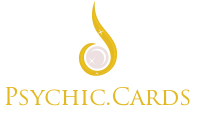Tarot cards are usually used as a tool for divination to uncover the forces at work in your life. You are probably familiar with some of the images or card names. Tarot cards originally started as a card game that originated in northern Italy and southern France in the 15th century. These original cards include trump cards, which are also known as the major arcana, as well as court and pip (numbered cards) cards that make up the cards of minor arcana. Over the centuries, tarot cards have transformed from a parlor game to a serious divination tool with a strong history grounded in ancient archetypes and evolving philosophies.
Contemporary Tarot Decks
Rider Waite—First published in 1910 by William Rider & Son of London, this is one of the most popular tarot decks published and is also known as the Rider-Waite-Smith deck. Edward Waite designed the deck in partnership with illustrator Pamela Smith. Each detailed card is highly symbolic was a fresh interpretation of the traditional cards. This is one of the first decks with detailed illustrations for each major and minor arcana card.
Morgan Greer—Inspired by the Rider Waite tarot deck, The Morgan-Greer Tarot was designed by Lloyd Morgan and artist Paul Foster Case in 1979. These cards are highly symbolic and add an extra layer of meaning through the use of vibrant color to evoke emotions. The illustrations are also at a closer range with no borders, so the picture goes to the edge of the card.
Thoth—Conceived to be an update of a traditional tarot deck, Thoth tarot cards include symbolism from a range of disciplines, including the occult, science, and philosophy, as well as other ancient mythologies. The deck was first published in 1969, with a new version printed in 1996. Lady Frieda Harris illustrated this deck under the direction of Aleister Crowley.
Historic Tarot Decks
Visconti-Sforza Tarot Deck—As one of the oldest tarot decks in history, the Visconti-Sforza deck is one of the main inspirations of modern tarot decks. Many of the most popular tarot decks derived their numbering and symbolism from this deck. First designed in the 15th century, there are no remaining complete collections of the Visconti-Sforza tarot deck; instead, there are different collections around the globe that include a variety of the original cards.
Tarot of Marseilles—Also known as the Tarot de Marseille, this is one of the original French variations of a tarot deck. It set a standard pattern that is still used by many modern variations of tarot decks. This deck is closely related to Italian playing cards of the same time and includes 56 cards in four suits.
Whether you are just embarking on your journey with tarot cards or are delving deeper into their history, there is much to learn about this ancient game and divination tool. In time, you will find that you may be drawn to one deck more than another or that you enjoy analyzing the symbolism of many different decks. Either way, you will be joining the ranks of historical figures who have turned to the tarot cards to find answers to life’s most difficult questions.
When choosing a deck for your personal use, study each different design and hold the cards if possible. Feel which ones connect with your spirit for the best outcome in readings. Before doing a reading for yourself or others, spend time with the cards and truly get to know them, along with their history. This can help a great deal when it comes to more accurate readings. Above all, enjoy working with your cards.


The detailed descriptions of the Rider Waite, Morgan Greer, and Thoth decks provide a good comparison for beginners like myself. It’s helpful to understand how each deck uses symbolism differently.
The historical context provided for each of these tarot decks is quite informative. It’s intriguing to see how the symbolism has evolved over time and how each deck brings something unique to the table.
Indeed, the evolution of tarot decks and their symbolism offers a fascinating insight into how cultural and philosophical ideas have been integrated into these cards.